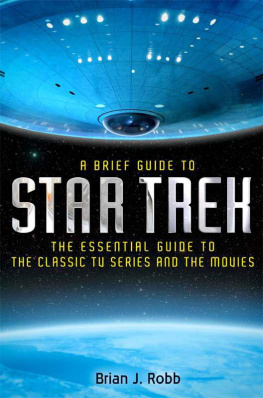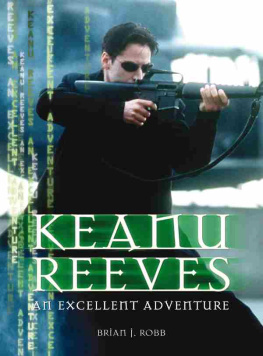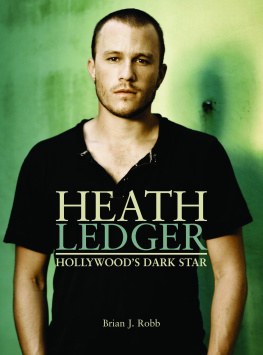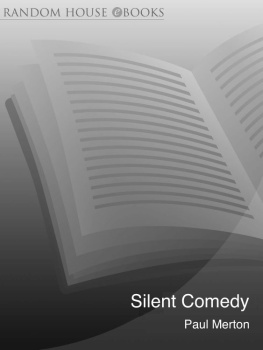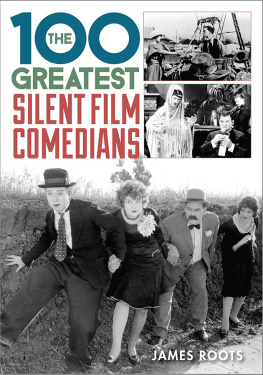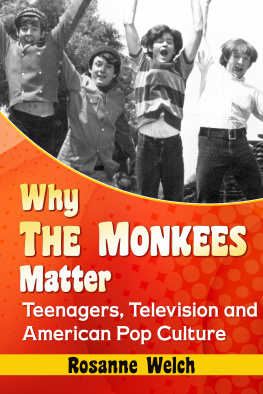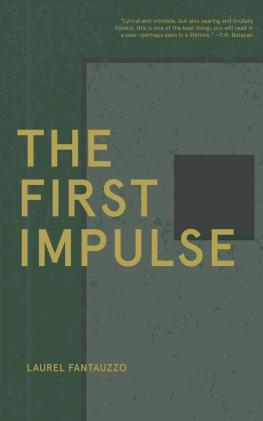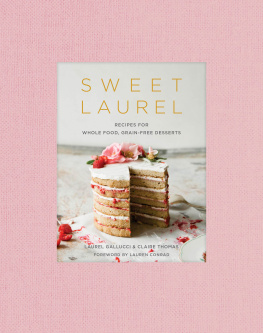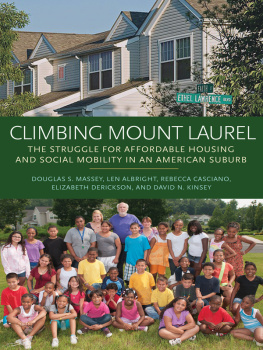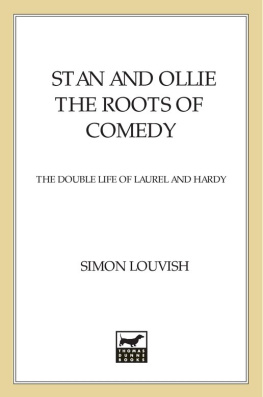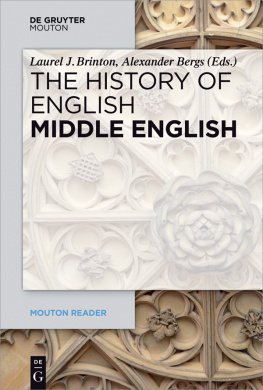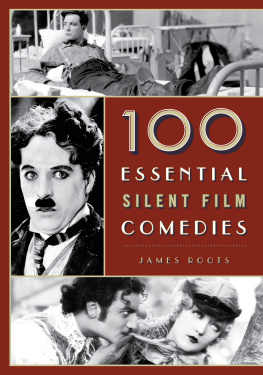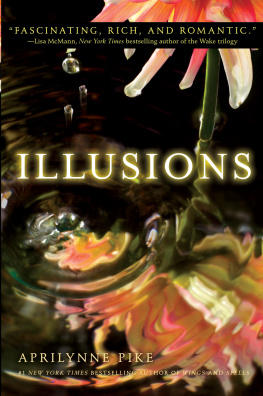Print edition published in 2008 by Pocket Essentials
P.O.Box 394, Harpenden, Herts, AL5 1XJ
www.pocketessentials.com
This eBook edition by Summersdale Publishers Ltd. 2010
Edited by: Jennifer Steele
Brian J Robb 2008
The right of Brian J Robb to be identified as author of this work has been asserted in accordance with the Copyright, Designs and Patents Act 1988.
All rights reserved. No part of this book may be reproduced, stored in or introduced into a retrieval system, or transmitted, in any form or by any means (electronic, mechanical, photocopying, recording or otherwise) without the written permission of the publishers.
Any person who does any unauthorised act in relation to this publication may be liable to criminal prosecution and civil claims for damages.
A CIP catalogue record for this book is available from the British Library.
eISBN 978 1 84839 362 2
To Cameron:
may Stan and Ollie always raise your spirits,
as they do mine.
Acknowledgements
Thanks to all those tireless researchers and fans who have dug into the history of Laurel and Hardy, especially John McCabe (the pioneer) and detail-oriented Randy Skretvedt and Glenn Mitchell.Also many thanks to Titan Books stalwarts Bob Kelly and David Barraclough for plugging the video gaps. Sincere thanks to the late Steve Brown of the Nashville tent, a redoutable 'Son of the Desert', who provided an invaluable errata list on the first edition of this volume.
Contents
1. Introduction: Mr Laurel and Mr Hardy
2. The Silent Films: Before the Teaming, 19201927
3. The Silent Films: After the Teaming, 19271929
4. The Sound Shorts, 1929
5. The Sound Shorts, 1930
6. The Sound Shorts, 1931
7. The Sound Shorts, 1932
8. The Sound Shorts, 1933
9. The Sound Shorts, 19341935
10. The Classic Features, 19311940
11. The Later Features, 19411954
12. Legacy of Laughter
13. Reference Materials
1. Introduction: Mr Laurel and Mr Hardy
Laurel and Hardy. The names alone are enough to raise a smile. They made 106 films together, not always recognisable as the team that audiences would come to know and love. It's an amazing body of work, as much for its consistent quality as for the endless laughs the films contain. The characters of 'Stan and Ollie', whom Laurel and Hardy created as their screen personas, have struck a chord with generation after generation of viewers, whether through cinema screenings, 8mm home movie releases, television screenings, video releases or newly restored films on DVD. Every technology developed in the almost 80 years since Laurel and Hardy began making movies has featured them, including copious websites on the Internet. Kids today still find the innocent slapstick, verbal dexterity and command of comedy of Laurel and Hardy hilariously funny. The Laurel and Hardy appreciation society, the Sons of the Desert, has a long history and a huge international membership. All of this, of course, stems from the films and the films came from two very creative men.
Stan Laurel, the creative powerhouse behind the Laurel and Hardy films, started life as Arthur Stanley Jefferson. He was born in the Lancashire town of Ulverston on 16 June 1890. With a theatre-owning, vaudeville-performing father, Laurel's destiny was decided for him. From the moment he stepped on stage as a child in a production at Pickard's Museum in Glasgow, owned by a friend of his father,Albert Pickard, Laurel knew the show-business life was for him. After performing in vaudeville in the UK as a teenager, he sailed to the United States in 1910 as part of the Fred Karno troupe of performers alongside Charles Chaplin. From 1914 to 1922, Laurel toured American vaudeville theatres, developing his stagecraft and comic timing. During this time, he partnered on stage and off (in a never-ratified common-law marriage) with Australian dancer Mae Charlotte Dahlberg Cuthbert. It was through Mae's discovery of a picture of a laurel wreath that Arthur Stanley Jefferson came by his stage name of Stan Laurel. Their stormy relationship lasted until 1925, although Mae would resurface once Laurel found fame and fortune in the movies.
Stan Laurel started working in films in 1917, beginning with Nuts in May. He made over 60 solo films, often at the rate of one each week. It was an ideal training ground for a young man finding his way in the field of film comedy. From the beginning of his film career, Laurel took an active part in the writing and directing of his films for various Hollywood studios, learning the tricks of this newly developing art form on the job.
Also in Hollywood in the late 1910s and learning about the movie business was Oliver Norvell Hardy, known to all as Babe. Born 18 January 1892, in Harlem, Georgia, Hardy grew up with his hotel-manager mother following the death of his father shortly after Hardy's birth. Music was Hardy's first love and aged eight he toured the American South as a boy soprano with a minstrel troupe. Sent to Atlanta to study music, Hardy instead got a job in a theatre singing to slides for 50 per day. By the age of 18, he was running the first movie theatre in Milledgeville, Georgia. Annoyed by the bad acting he saw in the movies, he set off in 1913, aged 21, to Florida where there was a burgeoning movie business, determined that he could do better.
Indeed, he could. Between 1914 and 1917 Hardy appeared in over 100 film shorts, usually playing 'heavies' or villains (due to his size) in support of comic talents like Larry Semon and Billy West. Never having acted on stage, Hardy developed subtle film acting skills suitable for the big screen that many old vaudevillians lacked. Like Laurel, Hardy married young, to pianist Madelyn Saloshin in 1913. They were divorced by 1920, whereupon Hardy promptly married Myrtle Lee Reeves, a film actress he'd known from childhood. This was to be a turbulent marriage, which, like Laurel's to Mae, would cause him problems in later years.
Hoping to develop his film career, Oliver Hardy went to Hollywood. There he met and worked with another young, struggling movie comedian, Stan Laurel. The pair featured in a 1920 short called The Lucky Dog, their first appearance in the same movie. It would be another seven years until they appeared together again, and several more years after that before they became the recognised team of Laurel and Hardy, but in that 1920 short the seeds of long-lasting comic greatness were sown.
2. The Silent Films: Before the Teaming, 19201927
The Lucky Dog
Credits: Producer: Gilbert M Anderson. Director: Jess Robbins. Two reels. Probably written & filmed: December 1920January 1921. May have been released by Metro late 1921early 1922. With Florence Gillet
Story: A stray dog befriends Stan and helps him to outwit a robber (Hardy) and a Swiss count (the robber in disguise). In between, he causes chaos at a dog show.
Production: The film had a mysterious history it was assumed TheLuckyDog was made in 1917 because Stan Laurel said so in a 1950s interview. However, a 1920 California licence plate spotted on a car and the established whereabouts of the primary cast members through 191720 suggest that The Lucky Dog was made in late 1920 or early 1921. Records of the distribution of the film are sketchy, due to the collapse of the production company, but


